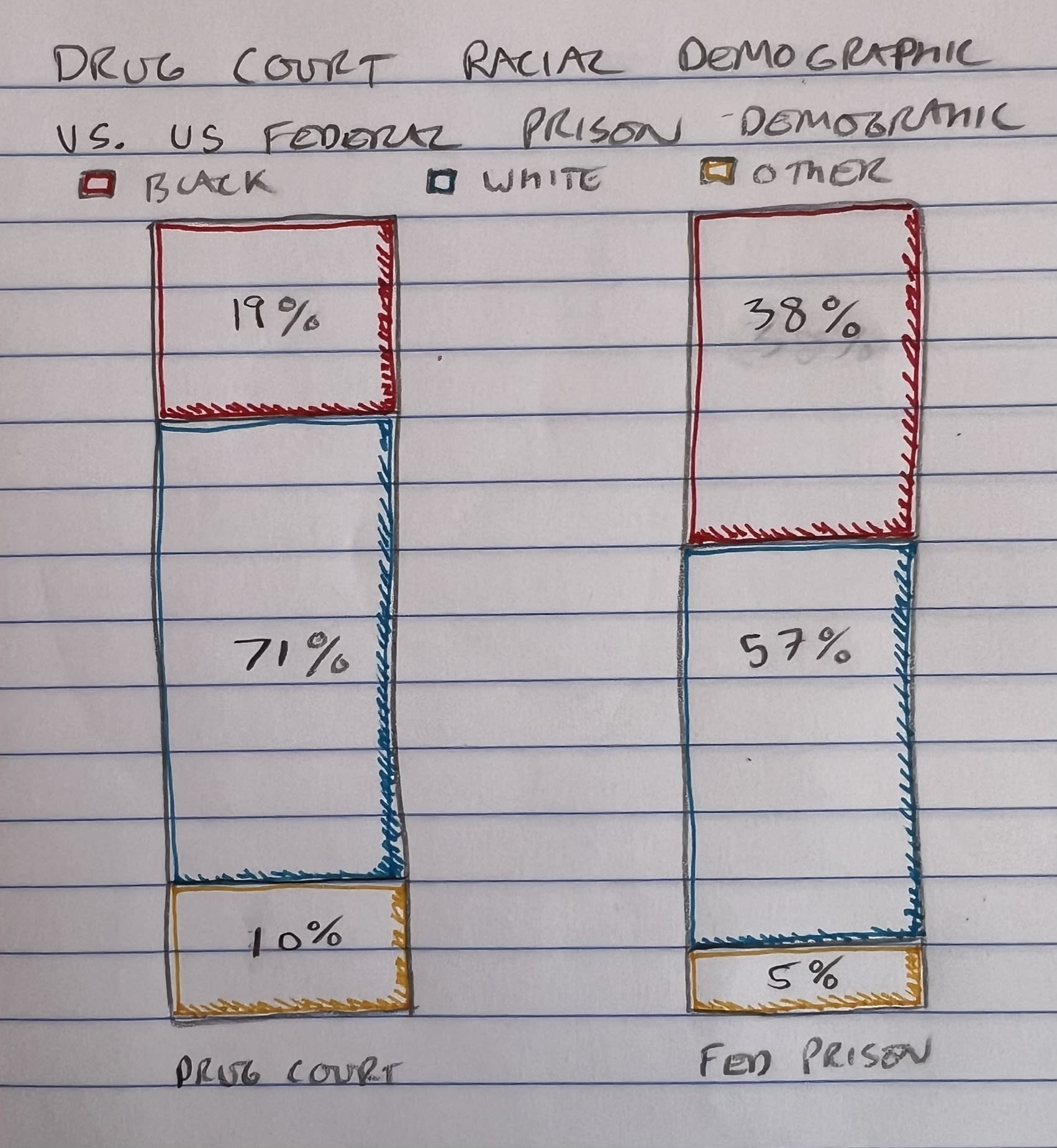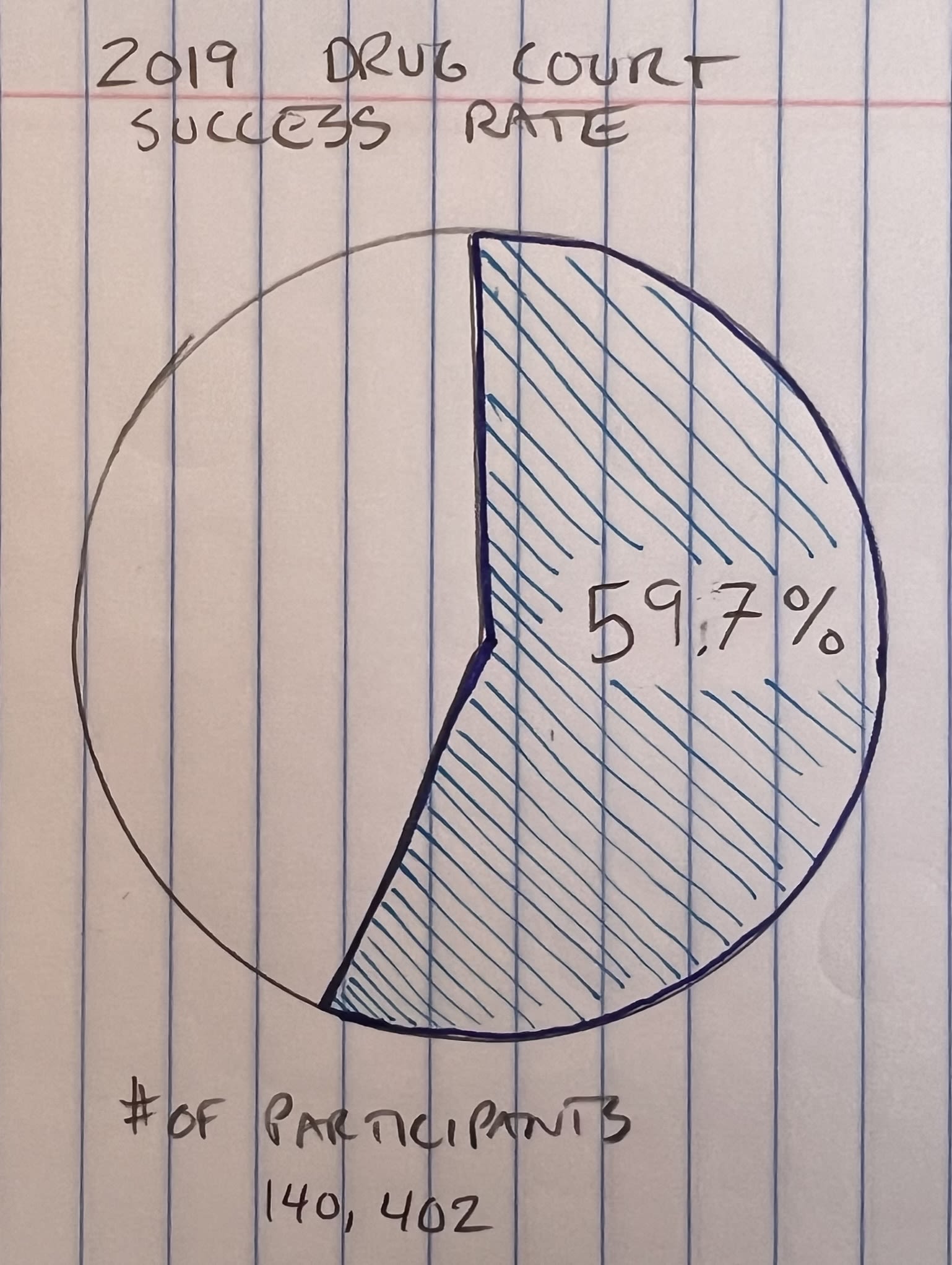Addressing Americas Drug Epidemic with Alternative Courts Wire Frame

Drug abuse in the United States is a major public health crisis, with no sign of alleviation. According to the National Center for Drug Abuse Statistics, half of people over 12 in the United states have used illicit drugs at least once. Additionally there have been over 700 thousand drug overdose deaths in the United States since the year 2000.
If we examine the percentages of individuals in Federal Prison on drug charges we see an alarming trend. Drug offenders comprise nearly half of the federal prison population, and there are nearly twice as many as the next largest category.
Incarceration is not treatment.
According to Harvard Political Review of the more than 600,000 individuals released from state and federal prisons each year, 2 out of 3 will be arrested and more than half will be incarcerated again.
Something has to change.
While there is no one solution to America's Drug problem, Drug Courts have been highly effective in keeping first time, non-violent drug offenders out of incarceration and on the road to recovery.
What is Drug Court?
Drug Courts are an alternative sentencing court with 3 main ambitions...
1. Help participants recover from use disorders in order to reduce future criminal activity
2. Provide an alternative to incarceration for non-violent offenders, reducing burdens on our nation's courts, jails, and prisons and providing offenders an opportunity to receive treatment and education
3. Require abstinence of substance abuse and accountability for behavior and legal responsibilities of participants.
Since the first Drug Court was founded in Miami-Dade County Florida in 1989 there are now over 3.9k drug treatment courts in the United States
75% of Drug Court graduates remain arrest free compared while the national recidivism rate of 66%
$27 dollars are saved on average for every $1 invested in Drug Court.
While drug courts are increasing and effective. There is still work to be done.
The proportion of individuals of color who are currently incarcerated is far more than those who are in drug courts. Drug courts need resources to more equitably help demographics who are not currently being reached.

While courts are receiving funding they are not receiving anywhere near the funds that prisons are receiving.
While there is a substantial rate of success, there is definitely room for improvement.

